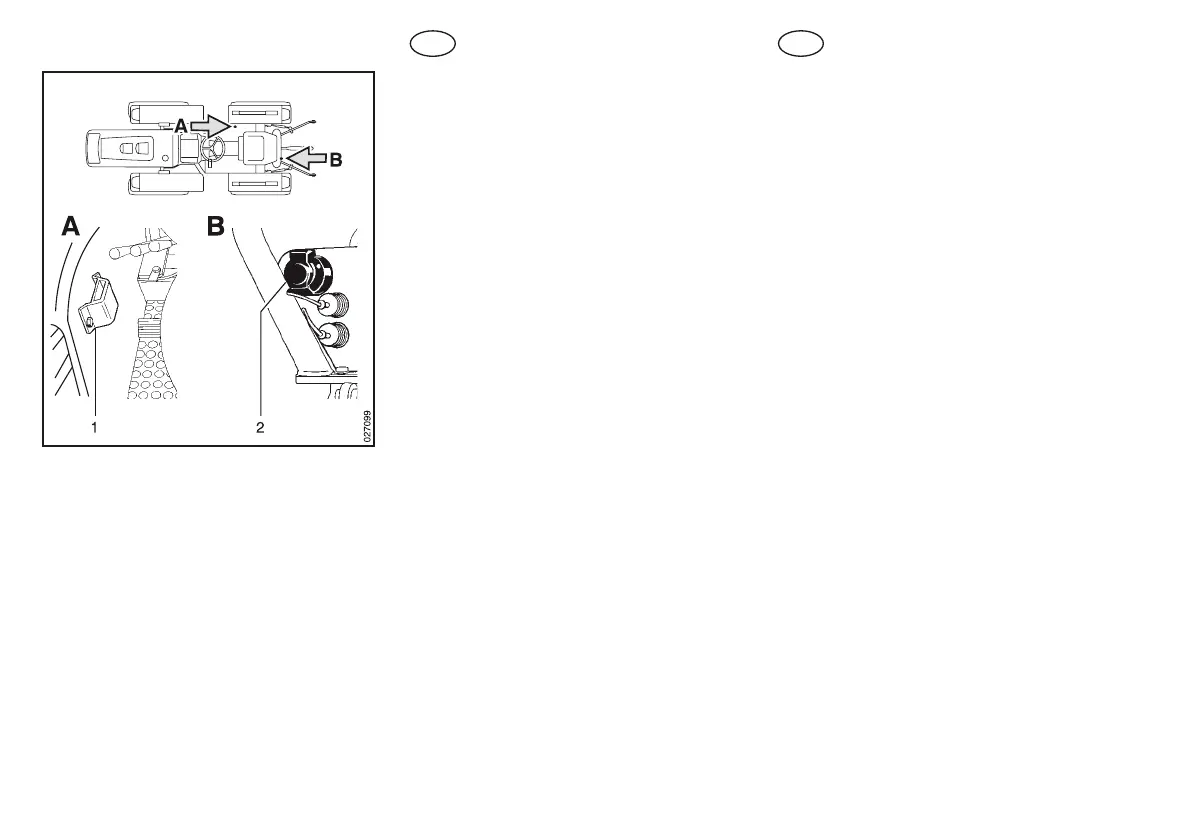Il gancio di traino può essere fissato alla trattrice
in otto diverse posizioni, come illustrato in figu-
ra 3. mediante quattro perni e quattro spilli di si-
curezza.
• Per assicurare stabilità e maneggevolezza di
guida alla trattrice durante il traino è necessario
posizionare in altezza il gancio in base alle ca-
ratteristiche ed al carico del rimorchio da traina-
re:
– per i rimorchi a due assi è consigliabile che il
timone assuma una posizione all’incirca oriz-
zontale;
– per i rimorchi ad un solo asse è consigliabile
collegare il timone in una posizione bassa; il
pianale del rimorchio deve essere orizzontale
ed il carico distribuito uniformemente.
•
Inserire la leva del freno a mano del rimorchio
nella sede (1, fig. 11, dett. A) sulla trattrice.
• Collegare il circuito elettrico del rimorchio a
quello della trattrice tramite il connettore (2,
fig. 11, dett. B).
•
Se il rimorchio da trainare è del tipo a ruote
motrici, il gancio di traino deve essere posizio-
nato in modo tale da lasciare libera la presa di
potenza per l’installazione del giunto cardanico
di collegamento al rimorchio.
The hitch can be fixed to the tractor in 8 diffe-
rent positions as illustrated in fig. 3 using the
four pins and their four safety clips.
• To ensure tractor stability and steering when
towing trailers, hitch height should be set for the
technical specifications of the trailer and the
load to be towed:
– for two axle trailers, the drawbar should be
more or less horizontal.
– for single axle trailers, the drawbar should be
coupled in a low position; the bed of the trailer
should be horizontal and the load evenly distri-
buted.
•
Put the trailer’s handbrake in its position on
the tractor (1, fig. 11, detail A).
•
Connect the trailer’s electric system to the
tractor using connector (2, fig. 11, detail B).
•
If the trailer to be towed has drive wheels, the
hitch must be positioned so as to leave the PTO
free so that the universal coupling can be atta-
ched to the trailer.
G
B
I
